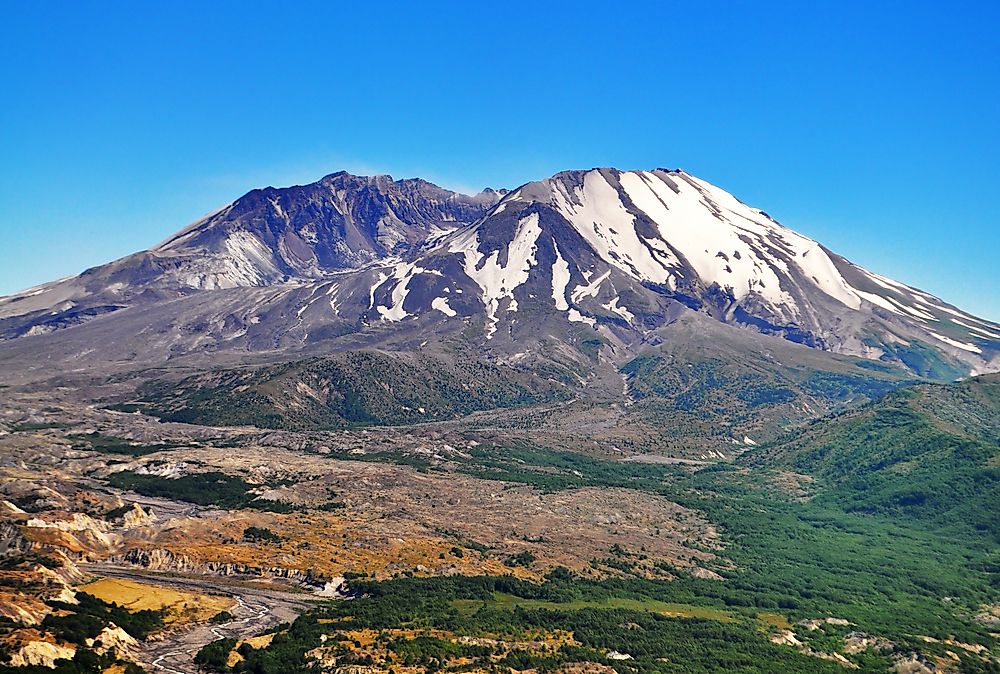What is a Mountain?

A mountain is a natural land formation that rises above the surrounding landscape for a limited area. Mountains are found on land and in the oceans. Rounded or sharp ridges, sloping sides, and a summit or a peak characterizes mountains. There are four ways that a land formation can be categorized as a mountain: it must have a height of 8,200 feet or above, an elevation of 4,900 feet and a slope more than 2 degrees, an elevation of 3,300 feet and a slope of more than 5 degree, or an elevation of 980 feet with an elevation range of 980 feet within 4.3 miles. From this definition, 24% of the planet's land mass is mountainous.
Formation of Mountains
Mountains can have isolated summits but a majority occur within mountain ranges. They are formed through volcanism or tectonic forces that raise the surface of the earth. The type of mountain corresponds with how it was formed. There are three types of mountains: block, fold, and volcanic mountains.
Block Mountains
A block mountain is caused by faults in the earth crust that force a region between the fault lines to slide past each other in a process known as rifting. The rising rocks are known as horsts while the submerging rocks are known as graben. Examples of block mountains include the Black Forest of Germany and the Vosges mountains of France.
Fold Mountains
A fold mountain is formed when two tectonic plates collide and the less dense plate is forced to bulge upwards. Although part of the tectonic plates is displaced upwards, a greater volume sinks into the mantle. Fold mountains occasionally occur in a mountain range. Examples of these mountains include the Jura Mountains, the Zagros Mountains, Ridge-and-Valley Appalachians, the Akwapim-Togo Ranges, and the Himalayan Mountain Range.
Volcanic Mountains
A volcanic mountain is formed when tectonic plates collide and one is pushed beneath the other. During the process, a magma chamber is destabilized and the magma is forced to the surface where it creates a stratovolcano or a shield volcano. Examples of volcanic mountains include Mauna Kea in Hawaii, Mount Fuji in Japan, and Nyamuragira in the DRC. Volcanic mountains are also formed when magma rises but does not flow on the surface but instead solidifies below. The solidified mass is then pushed up to create a mountain. Mountains formed in this manner include the Navajo Mountain in Utah, USA, Torfajökull in Iceland, and Mount St. Helens in Washington, USA.
Mountain Erosion
Mountains can also be formed through erosion. This occurs when an uplift is subjected to water, wind, gravity, and ice that actively shape the surface to simulate a mountain range. An example of a mountain formed through erosion is the Catskill Mountains.











